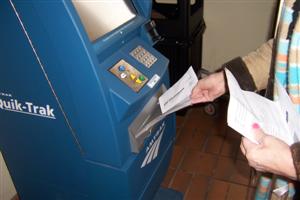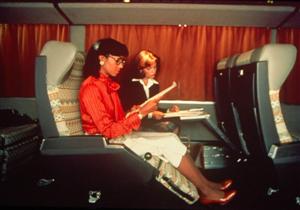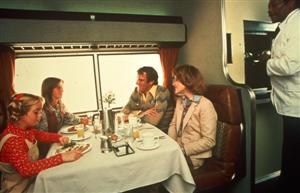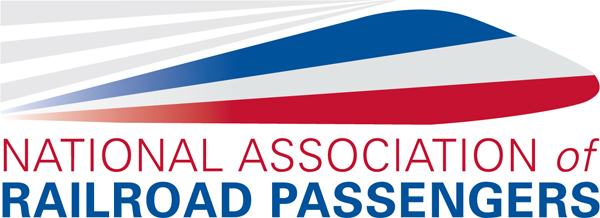What to Expect on a Train
Three ways to get the information you need. As with airlines, Amtrak charges more for last-minute reservations and for travel at peak periods. Save money by booking well in advance.
- On the internet: go to www.amtrak.com and enter your starting point, desired starting timeand date and your destination. Amtrak will find the train which best meets your criteria. It will also show whether upgrades, such as business class or sleeper space, are available and also the fare.
- By calling 800-USA-RAIL. You’ll talk to “Julie,” Amtrak’s automated voice recognition system. You can say the word “agent” and you’ll be transferred to a real, live person who can answer any question about train travel.
- Go to your nearest staffed Amtrak station. Amtrak ticket agents are very helpful and knowledgeable. You can also use QuikTrak machines to buy tickets at certain unstaffed stations.
Plus, don't forget that NARP members save 10% on most Amtrak rail fares, as long as reservations are made at least three days in advance of departure. If booking online, click the "Other Discounts" tab under "Tickets," and below the "Promotion Code" field, select "NARP" instead of "Adult" for each passenger who is a NARP member. If booking over the phone or with a station agent, advise the agent of any passengers who are NARP members. If the agent is unfamiliar with the NARP discount, ask them to book using "passenger type AR." Tickets using the NARP discount CANNOT be booked using "Julie" or at a QuikTrak machine.
 Buying your ticket
Buying your ticket
You can buy your ticket over the Internet. When you do, you will receive an eTicket travel document by email. Simply print this document or display it on your smartphone to the conductor and any other agent. The conductor will scan it either onboard the train or shortly before you board.
If booking over the phone, provide the agent with your email address so your eTicket can be emailed to you. eTicket Travel Documents can also be printed by station agents and QuikTrak machines.
If your reservation includes a Thruway bus that is not eTicketing-enabled, you will be given a reservation to print out which contains a number and a barcode. If you order by phone, you will be given a reservation number, and if you give the agent your email address a confirmation with barcode will be emailed to you. Simply take the reservation number to the nearest station with either an agent or a Quik-Trak machine.
- If picking up your ticket from an agent, simply give the agent your reservation number, and the agent will print out your ticket. You will be asked to provide identification (including your NARP membership card, if you booked your reservation using the NARP discount) and to sign the upper left corner of the ticket.
- If you make your reservation less than a week in advance and are departing from an unstaffed station (and did not receive an eTicket Travel Document), give your reservation number to the conductor when you board. If you did not pay for the reservation, the conductor will process your payment on board (cash or credit/debit card accepted), but you will be charged the highest possible fare (known as "full Y").
- If picking up your ticket from a Quik-Trak machine, scan the barcode as shown below,review the reservation information of the screen, and after you are sure everything is correct, touch “Print.” It will print out your tickets, which you will need to sign in the upper left corner. If you don’t have a bar code, just dip in your credit card or Amtrak Guest Rewards card and type in your reservation number (or select the reservation from a list of reservations made under your name). You will not be charged a second time.
At the station
We advise arriving about 30 minutes prior to departure. At very large or busy stations, you should arrive an hour before departure. At all staffed stations, an announcement will be made when the train is about to arrive or before boarding begins. Once on the boarding platform, train crew members will be at the doors of the cars, and will advise you as to which car to board. Different cars are used for various destinations, and for Business or Sleeper class. On long-distance trains, coach passengers will be assigned a seat number upon boarding.
 Settling in on the train
Settling in on the train
In coaches, there is usually a storage space for bags in one end of the car, or you can put your bags in the overhead racks. The conductor will come through the car collecting tickets; and will then put a seat check card above your seat. If you leave your seat, leave the seat check so that others will know that your seat is taken.
If you wish to change seats, ask the conductor or coach attendant before doing so. Empty seats are usually being held for passengers boarding farther down the line.
Underway on the train
Sit back and enjoy the ride. Some coach seats have fold-out leg rests, which allow you to stretch out. Almost all coach seats will recline, allowing you to set it to your comfort level. There are also reading lamps overhead, and electric outlets for each seat so that you don’t have to run down the batteries on electronic devices. Once the conductor has taken your ticket, you are free to move about the train and visit the dining and lounge cars.
Checked baggage
Most staffed stations offer checked baggage service. You can check up to three bags weighing 50 pounds or less each free of charge from your origin to your destination (including transfers at connection points), as long as both are staffed stations offering baggage service. Charges apply if you check more than 3 bags or one or more bags is over 50 pounds. Be sure to check your bag more than 30 minutes prior to departure, or else it may not make it onto your train. Allow up to 30 minutes at your arrival station for your bags to be brought to the baggage claim area (at many stations, you will simply claim your bag from the agent on the platform). Unlike airlines, you will need to have your claim check (small white square card with the 3-letter code of the arrival station printed on it) to claim your bag(s) at the arrival station, so be sure to keep it with you during your trip.
Boxed bicycles can be checked as baggage. Bike boxes are available for sale at all stations with checked baggage. You are responsible for disassembling your bicycle so that it fits in the box and for reassembling it after your trip. Some corridor trains allow unboxed bicycles to be carried aboard for a $5 fee. Firearms are accepted as checked baggage, as long as 48 hours notice is given (via telephone or in person to the agent at the departure station) and you fill out a declaration form. Pets are not allowed on any Amtrak train, including as baggage, except for registered service animals.
 Food
Food
Most trains have a cafe which can turn out a wide variety of hot and cold sandwiches, snacks and drinks. On trains with double-deck Superliner equipment, the café is located on the lower level of the lounge car, which is distinctive due to the large windows which curve up into the ceiling.
Trains which travel overnight have a dining car. The diner is a full-service restaurant on wheels, with sit-down table dining. Having “dinner in the diner” is one of the real pleasures of train travel. If you are a sleeping car passenger, the cost of your meals (except alcohol) is included. Take advantage of the diner- dining car meals are far superior to airline food! Tipping is customarily the same as in a restaurant - if you are a sleeping car passenger with meals included in your fare, it is customary to tip for the full value of your meal.
 Sleepers
Sleepers
There is usually a baggage storage area at one end of single-level cars, or on the lower level of double-decker cars. Smart travelers usually pack one small bag with items such as a toiletries, prescriptions and a change of clothes which they keep in their room. All rooms have doors with curtains for privacy. Sleepers are divided into roomettes (small, economy rooms similar to economy cabins on a cruise ship) and bedrooms. Both types have two beds, an upper and a lower. For Roomettes on double-decker trains, there will be a toilet and washstand in a separate room down the hall. On single-level trains, Roomettes have their own in-room toilets.
There will also be a room equipped with a shower and dressing rooms for Roomette passengers- ask your attendant for the location. All rooms have electrical outlets, reading lamps and individual temperature controls. The attendant will convert your room from day use (seats) to night use (beds) when you ask.
Bedrooms are larger than roomettes and have toilet and shower facilities enclosed in a part of your room.Family bedrooms can sleep up to four in a single room (but do not have their own bathrooms). Handicapped rooms are fully wheel-chair accessible with shower and toilet facilities in the room. On all sleepers, the car attendant will have fresh coffee and several types of juices ready when you get up in the morning. Dining car meals are included in the cost of your sleeper fare.
Tipping
It is customary to tip your sleeping car attendant about $5.00 per night for good service. It is also customary to tip Red Caps or station agents who assist with your baggage or take you in a golf cart between the train and the station.
Detraining
The conductor will announce your stop in advance. Check around your seat or room to make sure you haven’t left anything behind; cell phone chargers are the most frequent items left behind. Not all doors open at most stations, so look for a uniformed crew member to be standing at the nearest open door.
